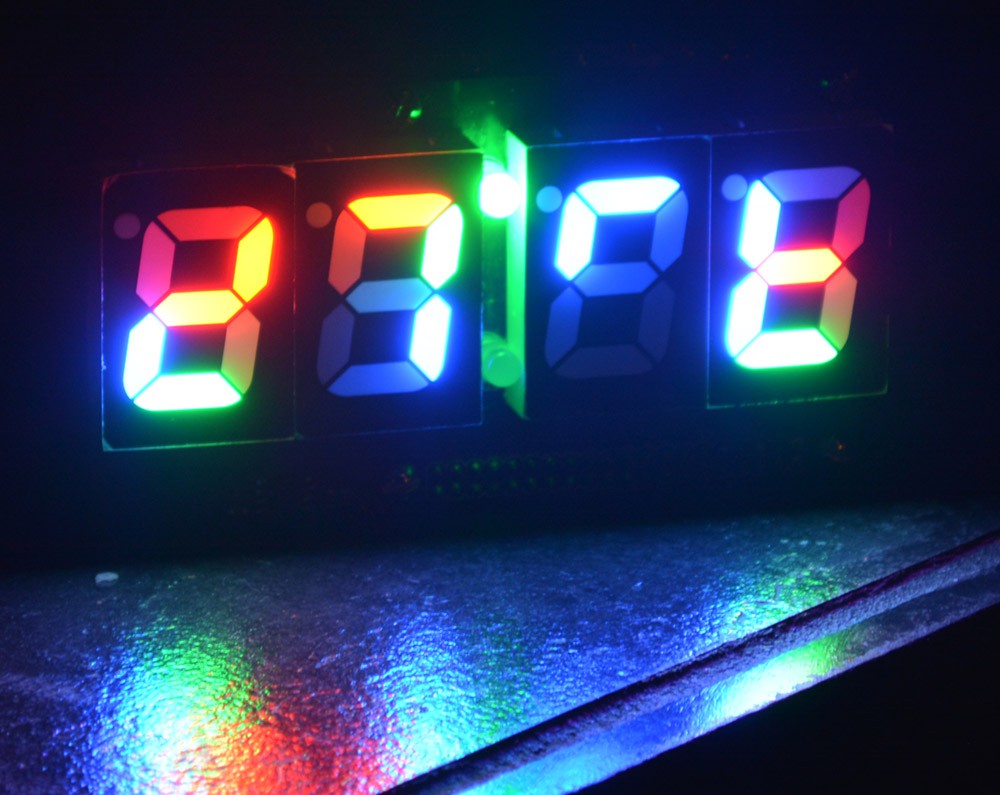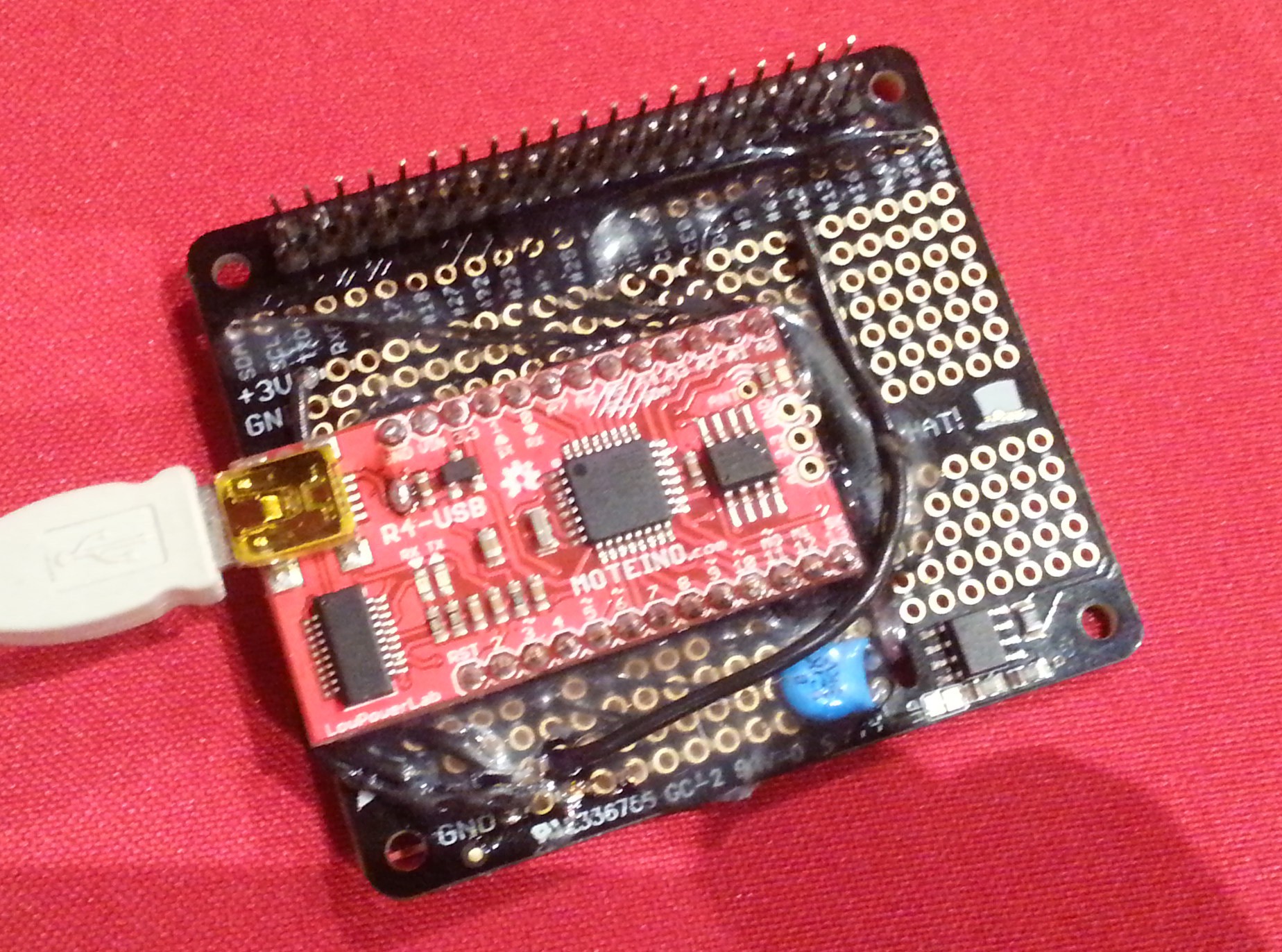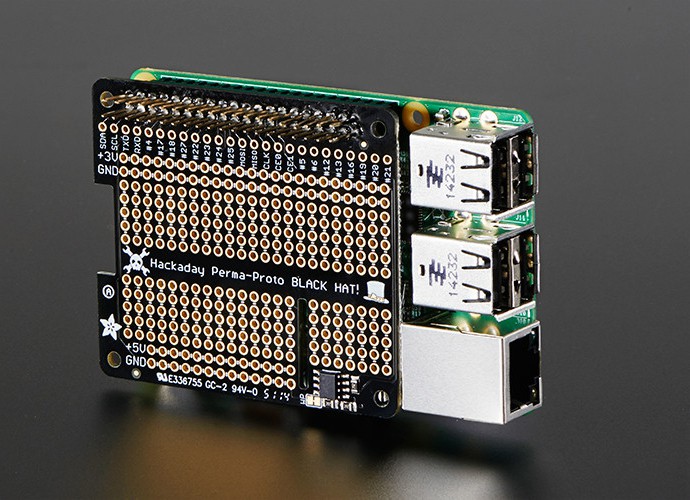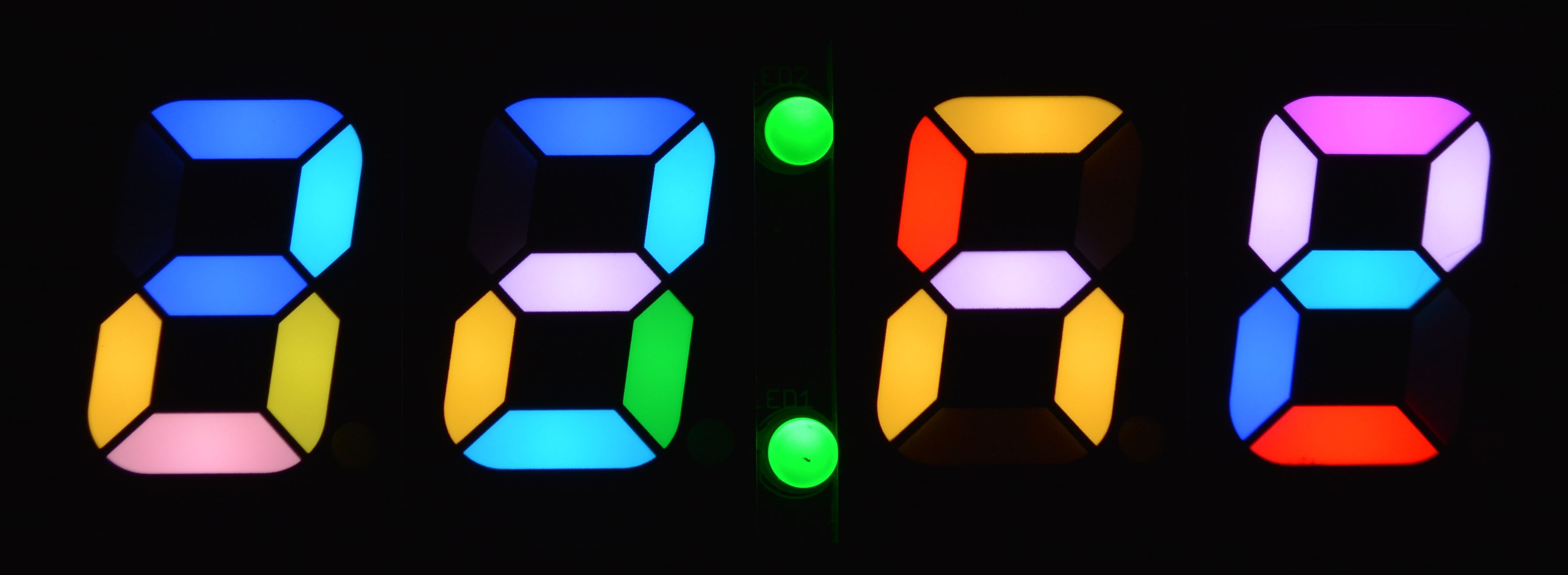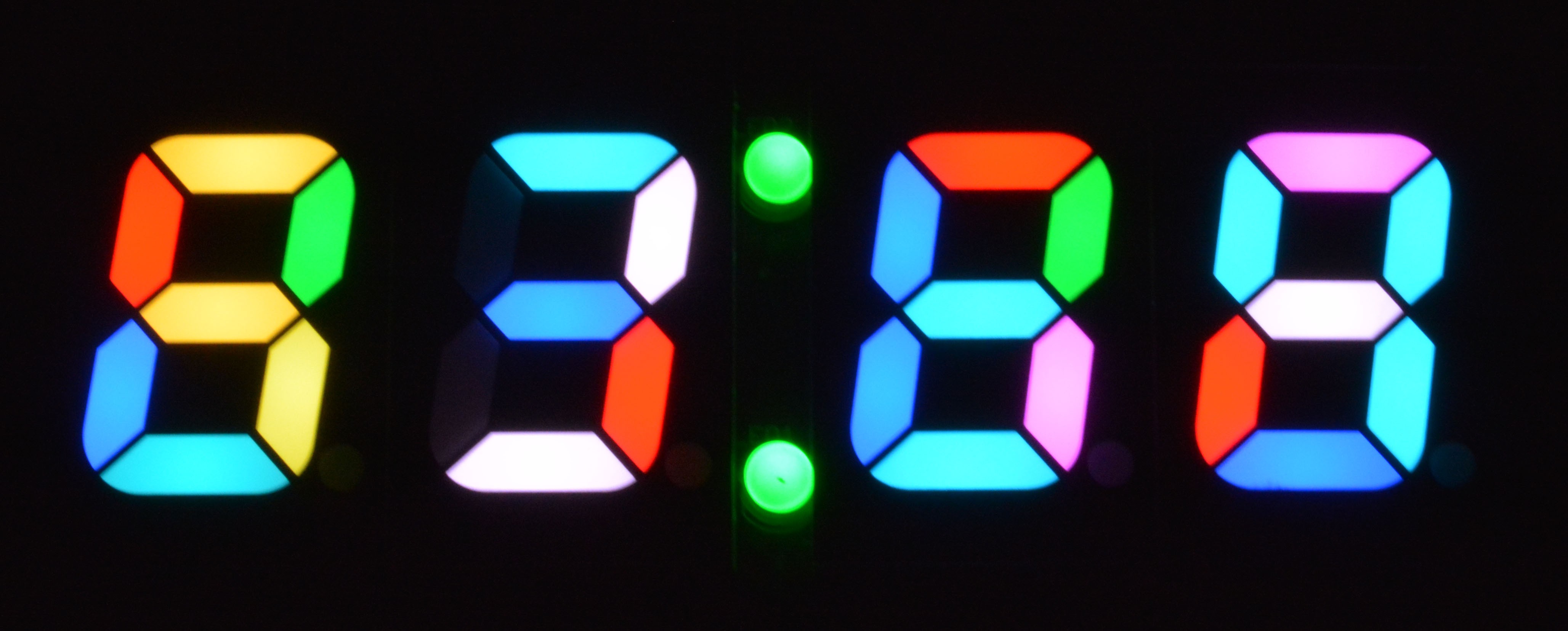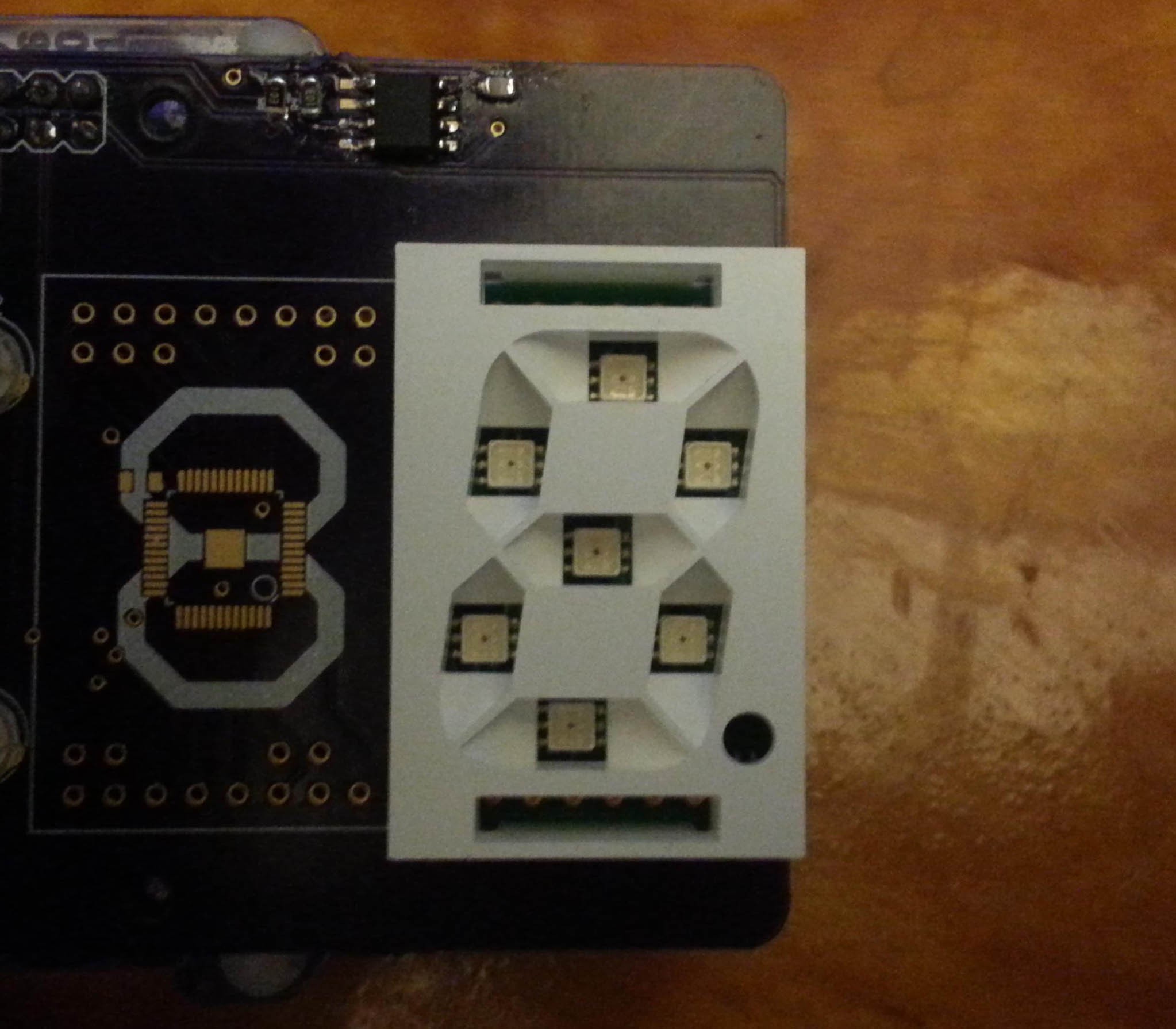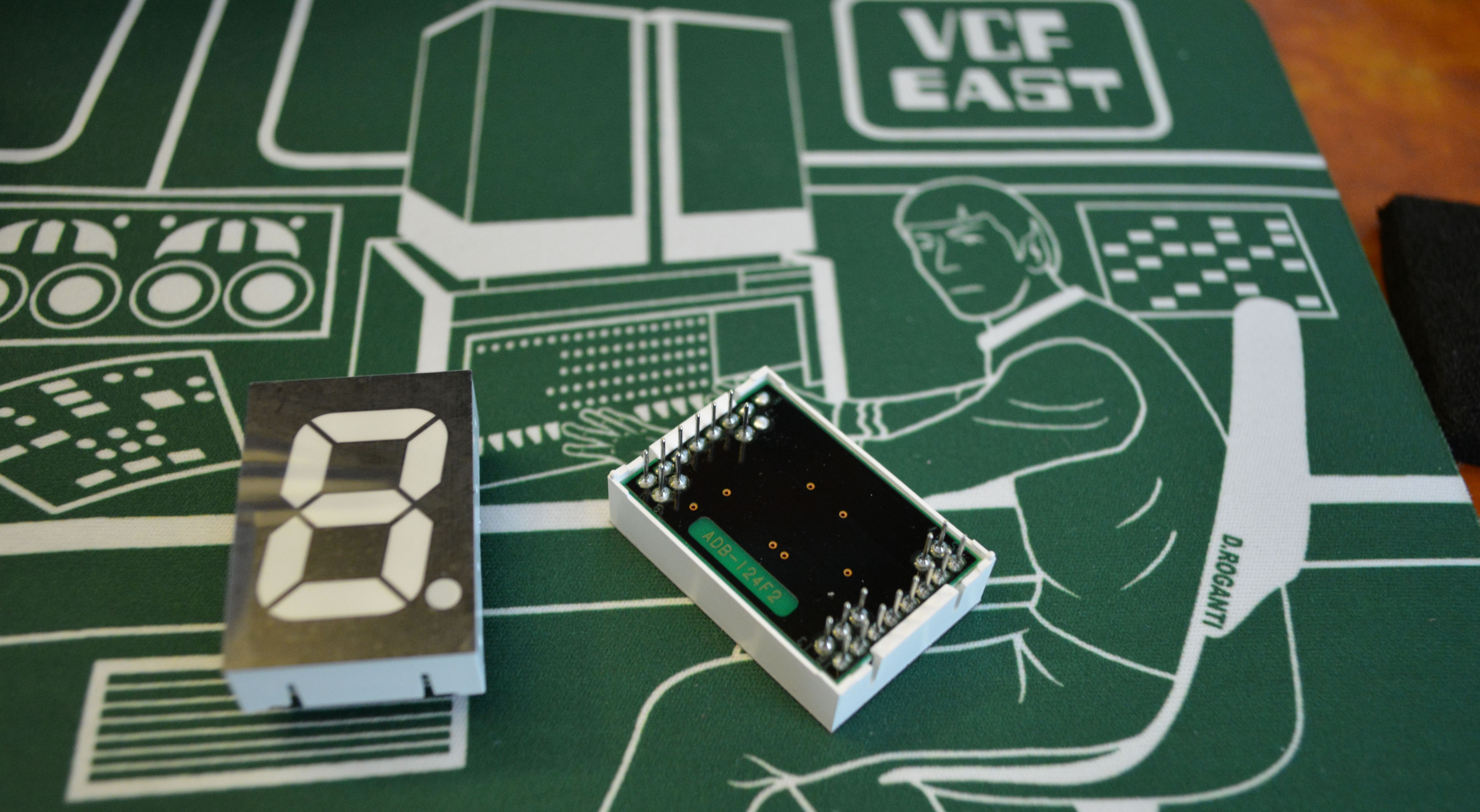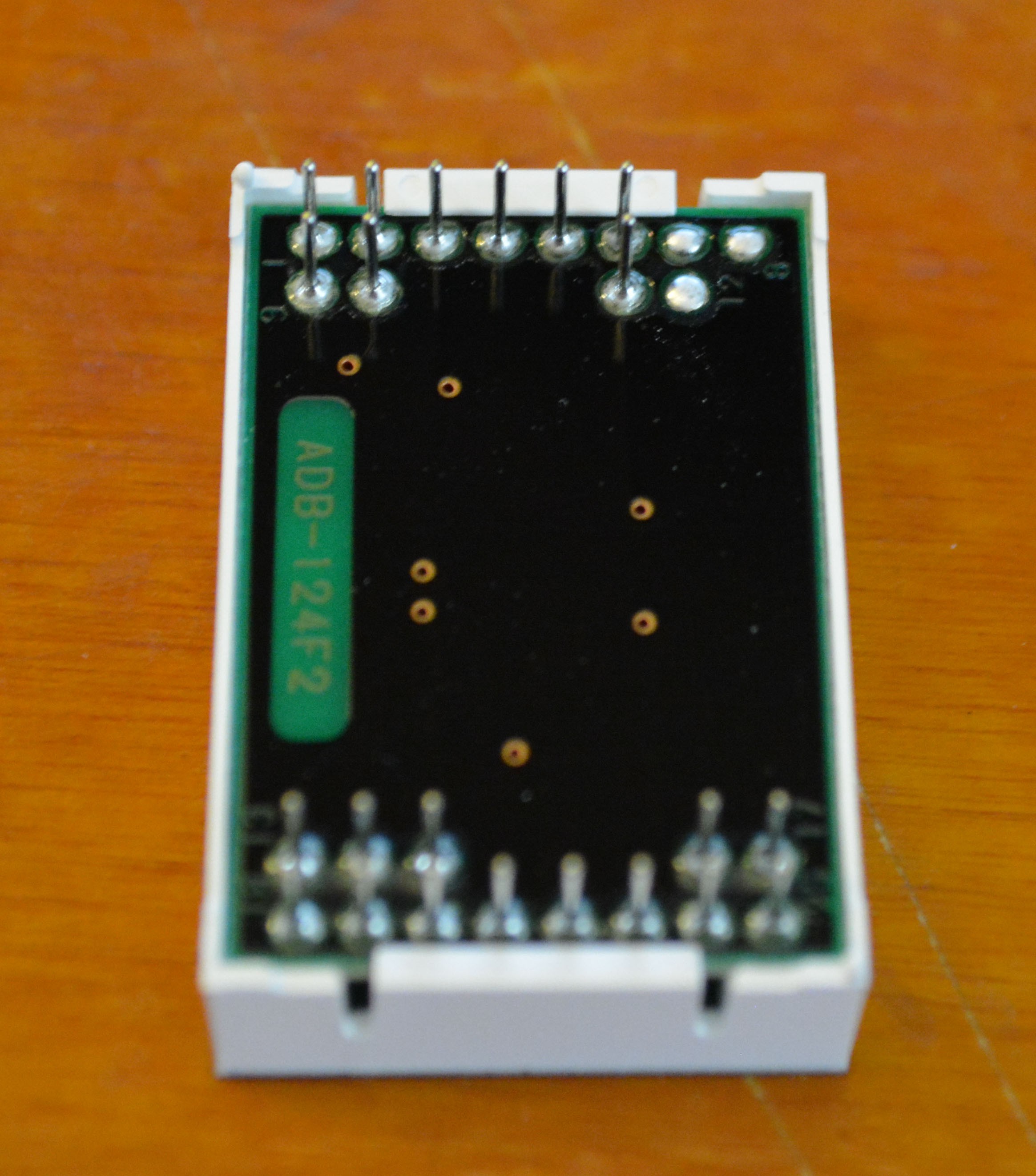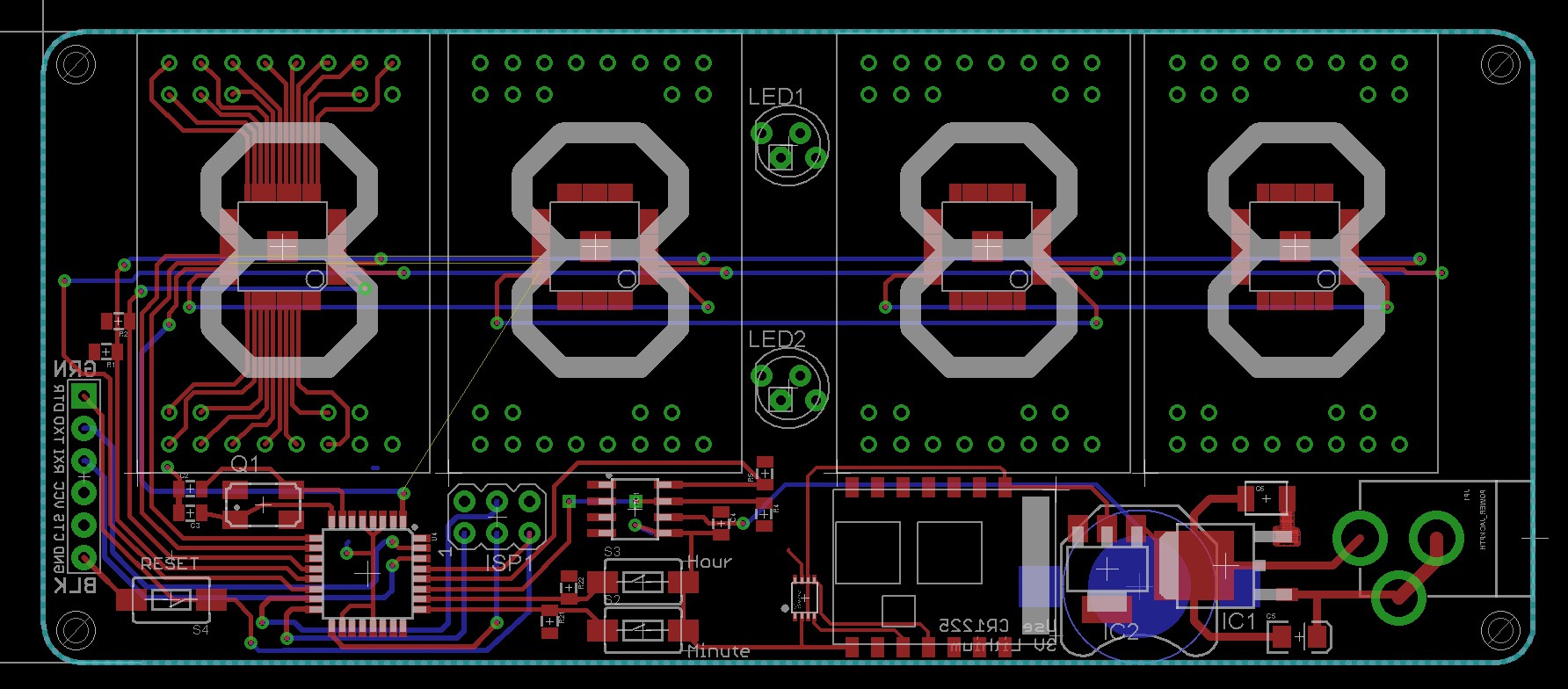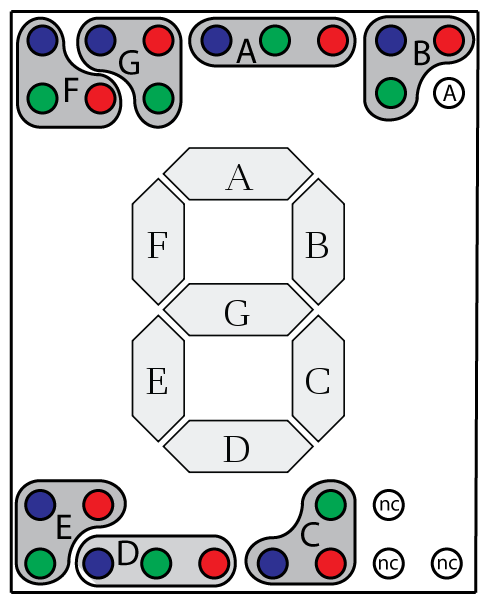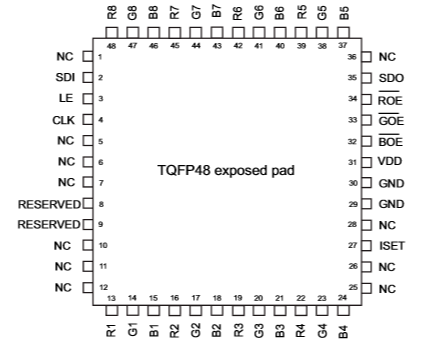-
Live Update From Bring A Hack
05/18/2015 at 06:10 • 0 commentsMaker Faire, the greatest show and sale on Earth is finally over. That means it's time for Bring A Hack, which laen from OSH Park has conveniently organized at the BJ's Pizza Palace in San Mateo. It's time to shine, which is good, because I really need to PWM these displays down:
I wrote the code for this at the bringahack, which makes me the most badass person possible. Also, free beer until we drank it all.
-
Moving to Moteino
05/03/2015 at 13:15 • 0 commentsI scrounged up enough stuff at the techcrunch JavaScript-a-thon to put together a microcontroller board for the clock:
![]()
Yes, that's a hot glue conformal coating. The rest is some 40ga kynar wire I had sitting around. I know it works, now it's just a matter of coding it.
Here's the pins for my future reference:
Data 11 Clock 12 Latch 13 ROE 5 GOE 9 BOE 3 SCL A5 SDA A4 -
Perhaps the Raspi was a bad idea
04/29/2015 at 18:38 • 0 commentsI originally designed this as a Raspi Hat for some reason I don't remember. I believe an Internet-connected clock was part of the decision, and of course the blog cred for putting a clock on a Raspi.
I am now reconsidering this choice.
I'm not getting PWM timing that looks good with only software PWM available on the Pi. A microcontroller would be a much better choice, so I'm getting one of these, sticking a Trinket on it, and plugging in the display/clock board.
![]()
It's really just a matter of putting the R, G, and B OE signals on different timers... A duino can do it...
-
Digits Finally Working
04/28/2015 at 06:53 • 3 comments![]()
![]()
![]()
![]()
I can't say I'm completely happy with it - I'm pretty sure I screwed up something on the colon LEDs, and a Raspi really isn't the right tool for this (but a Pi2 would...), but it works.
Now it's just a matter of turning it into a clock. I'm still trying to wrap my head around how the programming for that is going to go. After that, it's done. Until I repurpose a Pi Hat prototyping thing as a microcontroller breakout board or something...
-
Because Someone Is Probably Wondering What The Inside Of These Displays Look Like
04/23/2015 at 01:19 • 1 comment![]()
-
DS3231 RTC Up And Running
04/22/2015 at 22:53 • 0 commentsThe boards arrived and the I2C RTC is up and running, confirming that at least some of the board works. I'm a little hesitant about soldering those driver chips... I need a hot air setup.
If you need some instructions on setting up the I2C, here you go
-
Missing Pins And Eagle Footprints
04/20/2015 at 16:00 • 0 commentsI recieved my order from Adafruit this weekend. Checking out the pins for the RGB seven-segment displays, there are a few slight differences.
![]()
![]()
Yes, missing pins! There's no problem; the missing pins aren't connected to anything. They do, however, allow for a bit more flexibility in routing a project that uses these displays.
Other than that, these displays match my Eagle footprint, so I'm going to call that a win. Now I'm only waiting for the OSHPark boards to arrive, and I can start assembly.
-
I can confirm the Eagle LED2472G Footprint
04/13/2015 at 19:45 • 0 commentsJust got an order from Mouser. The Eagle footprint I created for the LED2472G driver is good. It's in the Github.
Here's a size comparison:
![]()
-
So Who Wants To Build The World's Coolest Clock?
04/12/2015 at 07:07 • 5 comments![]()
Before I dig into this, I'm just going to say, no, I'm not going to build this. This is simply an exercise in procrastination. It does look pretty cool, though.
Okay, with the Pi version out to fab, I figured the clock doesn't need that much RAM to drive the display, the Pi version already has a RTC, and we're basically working with shift registers here. For the fuck of it, let's design a version with a microcontroller.
And so a dozen hours were lost.
This version (it's in the github now) features:
- An ATMega328p microcontroller. Why not?
- A DS3231M Real Time Clock - no crystal required!
- Four LED2472G LED drivers. Why change what might work?
- Improved power supply. Yes, it's just a 7805, but that'll be more than enough to drive all the displays at maximum brightness
- Hour and Minute buttons, because I hate clocks around daylight savings time. No, a single button doesn't work, and every time DST comes around, I need to disconnect the battery in my car, and reconnect it exactly at noon.
- An ESP-8266. Why? Because there was space on the board for one, and I don't give a shit.
There we go, a microcontroller-based RGB Seven-Segment clock that has all the functionality of the Pi version and is completely overengineered for a clock. Does your clock have WiFi? No? Yeah, mine does.
I'm not going to build this. It's insane, impractical, and I'm already spending $200 on the prototype to see if the LED2472 drivers will work. I just made this one because I'm bored.
If anyone wants to make it, go ahead. It might work. Files are in the Git. I'd like to see it made, and you could probably sell a few of them on Tindie with some SEO on Pinterest or something...
-
Connecting Pins
04/11/2015 at 01:41 • 0 commentsSince I'm waiting two weeks or something until I get some boards and parts, It's a good enough time to figure out how this thing is going to be programmed. The first step to that is documenting how I laid this thing out. Here's the pin map:
![]()
Now it's a matter of how to connect this to the driver. Here's the datasheet for the driver. It gives me eight RGB drivers. Here's a table, because the editing tools on here are awesome:
How the displays are connected Driver output number Segment of the display 1 B 2 A 3 G 4 F 5 E 6 D 7 C And the pinout:
...and that's how you route these things with any semblance of sanity:![]()
![]()
Gummi Worm Clock
I forgot to build something for the Bay Area Maker Faire Bring A Hack event. I started this on April 7th. The Faire is May 16th.
 Benchoff
Benchoff